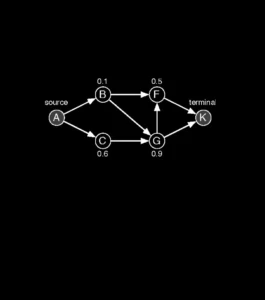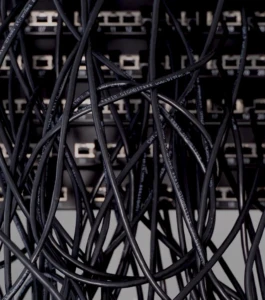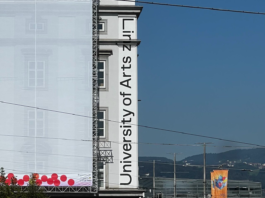HASHD0X [PROOF OF WAR]
2022 — ongoing;
Custom-built Raspberry Pi-based cameras, custom designed drone, LED wall, server running interactive photogrammetry model, software includes smart contract on Ethereum blockchain, web platform, mobile apps on Android & iOS.

Cryptomania, Zeppelin Museum, Friedrichshafen, DEU, 2023

Cryptomania, Zeppelin Museum, Friedrichshafen, DEU, 2023

Cryptomania, Zeppelin Museum, Friedrichshafen, DEU, 2023
The Premise
The premise of the Hashd0x's hacktivist proposal is that we may want to build tools that are not only capable of computing virtually anything, but also those capable of computing conditions to preserve truth.
"Proof of War" film.
2023, Raspberry Pi-based camera, custom-built software, Mobile App, Smart Contract on Near Protocol and Swarm Blockchains, web platform, LED wall, smartphone, server rack, patch panels, CAT7 cables
Hashd0x Decentralised App
Hashd0x [spelled hæʃdɑːks] came about as a technical and tactical proposal aimed to address common strategies of mis- and disinformation at the core of ongoing info warfare. At the point of recording this, hashd0x comprises a series of software and hardware prototypes. The software undergoes development towards a protocol for computationally driven investigations. Its design revolves around peer-to-peer, decentralised, user-owned, blockchain-based and serverless computing, allowing to record and verify provenance of still or moving images via hashing their metadata on-chain; this allows making informed assumptions on authenticity of examined imagery. To achieve this images or videos are captured via a dedicated digital camera or a mobile app; as the digital files are recorded onto devices’ flash storage, their content & metadata, including timestamp, signature & algorithmically assigned unique hash values are simultaneously recorded onto public blockchains. These blockchains are publicly owned databases, distributed across individual computer-nodes synced with each other and scattered across a planetwide variety of geographic locations.

Cryptomania, Zeppelin Museum, Friedrichshafen, DEU, 2023

↑ The custom-made camera based on Raspberry Pi allows shooting images and store them on the Blockchain.

↑ The model is reconstructed from photographic evidence captured using Hashd0x. Time, location, authorship and each pixel are indisputable as they are captured on-chain.

↑ Hashd0x app (already deployed and tested) for capturing images, generating hash (unique identification code of the image), storing it on blockchain and sharing the image file on the network.

↑ Raspberry Pi computer calculates the image hash and stores it on Blockchain.
Hashmark Proposal
This tactical proposal suggests the notion of hashmark, a p2p version of watermark designed for our computationally augmented information ecology. Hashmark is intended to augment the computational ontology of an image and extend professional technics of open source investigation. The latter is a form of professional social practice emerging to address these complex issues via data-driven digital examination practices. Hashmarks provide a set of data points allowing to address and distinguish factual evidence from fabricated content. Examples of such forms of disinformation are widely observed across social media feeds, i.e. Telegram channels, X (formerly Twitter) feeds and other platforms in which the imagery captured by witnesses of wars or other critical events circulates along with fictitious, often Ai-generated imagery.


↑ Decentralised backends.
Cryptographic commitments to content, metadata and the identity of the attestant, offline, self-signed, optimized for indexing on blockchains.
↑ Hardware stack.
Raspberry Pi, Raspberry Pi camera module, Nikon mount type telescopic lens, custom-built LED panel modular screen, server rack / RJ45 cables, Patch panels, smartphone.


↑ Hashmark.
Cryptographic commitments to content, metadata and the identity of the attestant, offline, self-signed, optimized for indexing on blockchains.
↑ Social validation.
Tamper-proof and censorship-resistant, online timestamp service, new sustainability mechanisms (e.g. DAOs).
Research Question
The internet enables information ecology at scale. The concept of scale is inherent in the design and engineering of web-based software. In the context of information warfare, this scale is often abused to engineer wide-spreading false narratives. These narratives aim to cause fear, confusion, villainization, or victimization of involved actors, groups, or sometimes entire nations. Let us be reminded that the internet is a relatively recent information ecosystem, enabled via an infrastructure of interconnected servers ingeniously engineered to transmit information. The nature of these information logistics was intentionally and justly created to be agnostic to the content it carries, neutrally allowing it to scale as designed.
Infrastructures of computing robust models of trust (or rather trust-less), namely blockchains, are layers of distributed computing-infrastructures built on top of the internet, addressing what its fundamental protocol designed to do or not to do. This basis protocol is called TCP/IP, which stands for Transmission Control Protocol/Internet Protocol.
These collective-computing layers, that we call blockchains, situated on top of the existing internet-protocol, enable a whole layer of complexity. They find forms of sophisticated protocols that compute scarcity, where it was previously absent by design.
Others compute entire ontologies, discrete entities and properties such as ownership, transferability, immutability and more.It is noteworthy that in the context of Hashd0x, such networks have demonstrated their efficacy in computing conditions to verify and instil confidence. The assured reliance within these networks is maintained via so-called, ‘trust-less’, information ecologies, in which nobody needs to trust because anyone can verify. Such verifiability of records is achieved through architectures of self-executing processes within transparent, programmable, collectively hosted and computed environments. This allows us to reassess our believes in what constitutes knowledge within today's technological condition of information infrastructures.
In Plato's epistemological formulation, knowledge is justified true belief. A belief is any claim that you accept. A true belief is any claim you accept that corresponds to how things are in the world, and a justified true belief is a true belief that has proper evidence.
In Plato's account, the entire premise of Hashd0x's proposal can be formulated as an attempt to build tools unlike many existing, capable of computing virtually anything. But those tools capable of computing conditions to present and store knowledge as a justified a true belief.
Proof of War
Hashd0x & Proof of War Series
The title of the artistic intervention reads as Proof of War. It’s a word play on the technical term Proof of Work (abbreviated as PoW). This term defines a common algorithmic consensus principle across various blockchains and a form of cryptographic proof in which one party proves to others that a certain amount of a specific computational effort has been expended. Proof of Work and its less energy-hungry sibling Proof of Stake are hard coded rules in blockchain ecosystems that model incentives and rules of participation within their networks.
Captured via custom built camera, Proof of War takes the shape of a video installation, a film and an online archive.
The moving image displays panoramic views of a point-cloud 3D scanned data of a shattered residential building. Images of this building are vastly present in myriad articles covering the atrocities of the Russian invasion in Ukraine. The building, situated in the tragically infamous Ukranian town of Borodyanka in Kyiv region, was pierced through by a missile. The 3D model of this building was algorithmically produced from hundreds of images and video files captured via the drone, designed to accommodate custom design hashing-capable camera.
Such form of 3D scanning involving a dataset of images was achieved via a software technique – aerial photogrammetry. It is a technology of obtaining reliable information about physical objects and the environment through the process of interpreting photographic imagery, which allows the generation of 3D digital models as an end product. As each and every image involved in the production of the digital 3D model has been captured via Hashd0x, decentralised app, they all have algorithmically assigned hashmarks in a form of immutable blockchain stamps. If we assume the success of involved blockchains will prevail, these documenting tragedy on-chain records will remain stored across a vast network of personal computers for countless years, serving as a digitally sculpted memorial to the atrocities of present-day war crimes, forever preserved in our digital archives, uncorrupted, uncensored, and time-stamped. This digitally frozen datascape depicts evidence of some of the most dramatic and terrifying acts of violence in recent decades of European history. Following-up on grassroots initiative taking shape of a tactical software, this hactivist intervention addresses genuinely troubled condition of truth in today’s world; A world largely driven by information epidemics and information wars at a scale unseen before.

Lies, Half-Truths & Propaganda [The Bad, the Worse, and the Worst], alexanderlevy Gallery, Berlin, DEU, 2022

Lies, Half-Truths & Propaganda [The Bad, the Worse, and the Worst], alexanderlevy Gallery, Berlin, DEU, 2022

↑ Hashd0x app;
Link to the online platform and the app.

↑ A custom-made camera based on Raspberry Pi allows shooting images and store them on Blockchain. Raspberry Pi computer calculates the image hash and stores it on Blockchain.

↑ LED Screen with the visualization of the Hashd0x pipelines, explaining the algorithm of image verification.
HASHD0X [PROOF OF WAR]





Cryptomania, Zeppelin Museum, Friedrichshafen, DEU, 2023
Cryptomania, Zeppelin Museum, Friedrichshafen, DEU, 2023
Cryptomania, Zeppelin Museum, Friedrichshafen, DEU, 2023
Cryptomania, Zeppelin Museum, Friedrichshafen, DEU, 2023
Cryptomania, Zeppelin Museum, Friedrichshafen, DEU, 2023
2022 — ongoing;
Custom-built Raspberry Pi-based cameras, custom designed drone, LED wall, server running interactive photogrammetry model, software includes smart contract on Ethereum blockchain, web platform, mobile apps on Android & iOS.
The Premise
The premise of the Hashd0x's hacktivist proposal is that we may want to build tools that are not only capable of computing virtually anything, but also those capable of computing conditions to preserve truth.
Hashd0x Decentralised App

↑ Raspberry Pi computer calculates the image hash and stores it on Blockchain.
Hashd0x [spelled hæʃdɑːks] came about as a technical and tactical proposal aimed to address common strategies of mis- and disinformation at the core of ongoing info warfare. At the point of recording this, hashd0x comprises a series of software and hardware prototypes. The software undergoes development towards a protocol for computationally driven investigations. Its design revolves around peer-to-peer, decentralised, user-owned, blockchain-based and serverless computing, allowing to record and verify provenance of still or moving images via hashing their metadata on-chain; this allows making informed assumptions on authenticity of examined imagery. To achieve this images or videos are captured via a dedicated digital camera or a mobile app; as the digital files are recorded onto devices’ flash storage, their content & metadata, including timestamp, signature & algorithmically assigned unique hash values are simultaneously recorded onto public blockchains. These blockchains are publicly owned databases, distributed across individual computer-nodes synced with each other and scattered across a planetwide variety of geographic locations.

Cryptomania, Zeppelin Museum, Friedrichshafen, DEU, 2023

↑ The custom-made camera based on Raspberry Pi allows shooting images and store them on the Blockchain.

↑ The model is reconstructed from photographic evidence captured using Hashd0x. Time, location, authorship and each pixel are indisputable as they are captured on-chain.

↑ Hashd0x app (already deployed and tested) for capturing images, generating hash (unique identification code of the image), storing it on blockchain and sharing the image file on the network.
Hashmark Proposal
This tactical proposal suggests the notion of hashmark, a p2p version of watermark designed for our computationally augmented information ecology. Hashmark is intended to augment the computational ontology of an image and extend professional technics of open source investigation. The latter is a form of professional social practice emerging to address these complex issues via data-driven digital examination practices. Hashmarks provide a set of data points allowing to address and distinguish factual evidence from fabricated content. Examples of such forms of disinformation are widely observed across social media feeds, i.e. Telegram channels, X (formerly Twitter) feeds and other platforms in which the imagery captured by witnesses of wars or other critical events circulates along with fictitious, often Ai-generated imagery.


↑ Decentralised backends.
Cryptographic commitments to content, metadata and the identity of the attestant, offline, self-signed, optimized for indexing on blockchains.
↑ Hardware stack.
Raspberry Pi, Raspberry Pi camera module, Nikon mount type telescopic lens, custom-built LED panel modular screen, server rack / RJ45 cables, Patch panels, smartphone.


↑ Hashmark.
Cryptographic commitments to content, metadata and the identity of the attestant, offline, self-signed, optimized for indexing on blockchains.
↑ Social validation.
Tamper-proof and censorship-resistant, online timestamp service, new sustainability mechanisms (e.g. DAOs).
Research Question
The internet enables information ecology at scale. The concept of scale is inherent in the design and engineering of web-based software. In the context of information warfare, this scale is often abused to engineer wide-spreading false narratives. These narratives aim to cause fear, confusion, villainization, or victimization of involved actors, groups, or sometimes entire nations. Let us be reminded that the internet is a relatively recent information ecosystem, enabled via an infrastructure of interconnected servers ingeniously engineered to transmit information. The nature of these information logistics was intentionally and justly created to be agnostic to the content it carries, neutrally allowing it to scale as designed.
Infrastructures of computing robust models of trust (or rather trust-less), namely blockchains, are layers of distributed computing-infrastructures built on top of the internet, addressing what its fundamental protocol designed to do or not to do. This basis protocol is called TCP/IP, which stands for Transmission Control Protocol/Internet Protocol.
These collective-computing layers, that we call blockchains, situated on top of the existing internet-protocol, enable a whole layer of complexity. They find forms of sophisticated protocols that compute scarcity, where it was previously absent by design.
Others compute entire ontologies, discrete entities and properties such as ownership, transferability, immutability and more.It is noteworthy that in the context of Hashd0x, such networks have demonstrated their efficacy in computing conditions to verify and instil confidence. The assured reliance within these networks is maintained via so-called, ‘trust-less’, information ecologies, in which nobody needs to trust because anyone can verify. Such verifiability of records is achieved through architectures of self-executing processes within transparent, programmable, collectively hosted and computed environments. This allows us to reassess our believes in what constitutes knowledge within today's technological condition of information infrastructures.
In Plato's epistemological formulation, knowledge is justified true belief. A belief is any claim that you accept. A true belief is any claim you accept that corresponds to how things are in the world, and a justified true belief is a true belief that has proper evidence.
In Plato's account, the entire premise of Hashd0x's proposal can be formulated as an attempt to build tools unlike many existing, capable of computing virtually anything. But those tools capable of computing conditions to present and store knowledge as a justified a true belief.
Proof of War
Hashd0x & Proof of War Series
The title of the artistic intervention reads as Proof of War. It’s a word play on the technical term Proof of Work (abbreviated as PoW). This term defines a common algorithmic consensus principle across various blockchains and a form of cryptographic proof in which one party proves to others that a certain amount of a specific computational effort has been expended. Proof of Work and its less energy-hungry sibling Proof of Stake are hard coded rules in blockchain ecosystems that model incentives and rules of participation within their networks.
Captured via custom built camera, Proof of War takes the shape of a video installation, a film and an online archive.
The moving image displays panoramic views of a point-cloud 3D scanned data of a shattered residential building. Images of this building are vastly present in myriad articles covering the atrocities of the Russian invasion in Ukraine. The building, situated in the tragically infamous Ukranian town of Borodyanka in Kyiv region, was pierced through by a missile. The 3D model of this building was algorithmically produced from hundreds of images and video files captured via the drone, designed to accommodate custom design hashing-capable camera.
Such form of 3D scanning involving a dataset of images was achieved via a software technique – aerial photogrammetry. It is a technology of obtaining reliable information about physical objects and the environment through the process of interpreting photographic imagery, which allows the generation of 3D digital models as an end product. As each and every image involved in the production of the digital 3D model has been captured via Hashd0x, decentralised app, they all have algorithmically assigned hashmarks in a form of immutable blockchain stamps. If we assume the success of involved blockchains will prevail, these documenting tragedy on-chain records will remain stored across a vast network of personal computers for countless years, serving as a digitally sculpted memorial to the atrocities of present-day war crimes, forever preserved in our digital archives, uncorrupted, uncensored, and time-stamped. This digitally frozen datascape depicts evidence of some of the most dramatic and terrifying acts of violence in recent decades of European history. Following-up on grassroots initiative taking shape of a tactical software, this hactivist intervention addresses genuinely troubled condition of truth in today’s world; A world largely driven by information epidemics and information wars at a scale unseen before.

Lies, Half-Truths & Propaganda [The Bad, the Worse, and the Worst], alexanderlevy Gallery, Berlin, DEU, 2022

↑ LED Screen with the visualization of the Hashd0x pipelines, explaining the algorithm of image verification.

↑ Hashd0x app;
Link to the online platform and the app.

↑ A custom-made camera based on Raspberry Pi allows shooting images and store them on Blockchain. Raspberry Pi computer calculates the image hash and stores it on Blockchain.
CONTACTS
LINKS
STUDIO
Tokyo | Berlin | Vienna
Contact Email
mail[at]kraft.studio
Press Materials:
Copyright
Kraft Studio © 2023
Egor Kraft
Artist, Director & Founder
Anna Kraft
Production & Communication
Artem Konevskikh
Ai Research & Development















